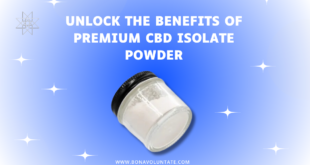In today’s competitive market, businesses are constantly seeking ways to increase their leads and conversions. The process of turning potential customers into actual buyers is crucial for the growth of any company. This blog will explore key strategies to maximize both leads and conversions, ensuring your business thrives in a crowded digital landscape.
Understanding Leads and Conversions
Before diving into strategies, it’s important to understand the difference between leads and conversions.
- Leads: These are potential customers who have shown interest in your product or service. This interest is typically indicated by actions such as filling out a form, subscribing to a newsletter, or following your brand on social media.
- Conversions: A conversion occurs when a lead takes the desired action, such as making a purchase, signing up for a service, or requesting a consultation.
Maximizing both leads and conversions requires a combination of effective marketing techniques, targeted content, and a deep understanding of your audience.
1. Optimize Your Website for Lead Generation
Your website is often the first point of contact for potential customers. Ensuring it’s optimized for lead generation is key to increasing conversions. Here are some tips:
- Clear Call-to-Actions (CTAs): Make sure your CTAs are prominently displayed and clearly worded. They should guide visitors toward the next step in their customer journey, whether that’s signing up for a newsletter or making a purchase.
- Landing Pages: Create dedicated landing pages for specific campaigns. These pages should be simple, focused, and designed to drive a single action.
- User Experience (UX): A website that’s easy to navigate and visually appealing will keep visitors engaged longer, increasing the chances of conversion.
2. Leverage Content Marketing
Content marketing is a powerful tool for attracting and converting leads. By providing valuable information, you can build trust with your audience and guide them through the sales funnel. Consider these content strategies:
- Blogging: Regularly publish blog posts that address the pain points and interests of your target audience. Use your keyword, “leads and conversions,” naturally within the content to improve SEO and attract organic traffic.
- E-books and Whitepapers: Offer in-depth resources in exchange for contact information. This not only positions your brand as an industry authority but also helps in capturing leads.
- Webinars: Hosting webinars allows you to engage directly with potential customers, answer their questions, and showcase your expertise.
3. Use Social Proof to Build Trust
Social proof, such as customer reviews, testimonials, and case studies, can significantly impact conversions. When potential customers see that others have had positive experiences with your brand, they’re more likely to trust you and take the desired action.
- Testimonials: Display testimonials prominently on your website and in your marketing materials. Ensure they are authentic and relevant to the services or products you offer.
- Case Studies: Share detailed case studies that demonstrate how your product or service has helped other customers achieve their goals.
4. Implement a Multi-Channel Marketing Strategy
Relying on a single channel to generate leads and conversions is limiting. A multi-channel approach allows you to reach a broader audience and engage with them in different ways. Here’s how to do it:
- Email Marketing: Use personalized email campaigns to nurture leads and guide them toward conversion. Segment your email lists to target specific groups with tailored content.
- Social Media Marketing: Engage with potential customers on social media platforms where they spend their time. Use paid ads to target specific demographics and drive traffic to your website.
- Paid Advertising: Invest in pay-per-click (PPC) campaigns to reach a wider audience quickly. Use retargeting ads to bring back visitors who didn’t convert on their first visit.
5. Optimize for Mobile Users
With more people accessing websites through their mobile devices, it’s crucial to optimize your site for mobile use. A mobile-friendly website ensures that potential customers have a seamless experience, regardless of the device they’re using.
- Responsive Design: Ensure your website adapts to different screen sizes and devices. A responsive design improves user experience and can positively impact your search engine rankings.
- Mobile-Optimized Content: Create content that’s easy to read and interact with on smaller screens. Short paragraphs, bullet points, and large buttons are all mobile-friendly elements.
6. Analyze and Adjust Your Strategy
Continuous analysis and adjustment of your lead generation and conversion strategies are necessary for long-term success. Use data to identify what’s working and what’s not, and make informed decisions based on your findings.
- A/B Testing: Test different versions of your CTAs, landing pages, and email campaigns to see which performs better. A/B testing helps you refine your strategy for maximum impact.
- Analytics Tools: Utilize tools like Google Analytics to track user behavior, conversion rates, and other key metrics. This data provides insights into how visitors are interacting with your website and where you might be losing them.
7. Nurture Leads with a CRM System
A Customer Relationship Management (CRM) system is essential for tracking and nurturing leads through the sales funnel. With a CRM, you can:
- Track Interactions: Monitor all interactions with potential customers, from initial contact to conversion. This allows you to personalize follow-ups and build stronger relationships.
- Automate Tasks: Automate routine tasks such as email follow-ups, lead scoring, and data entry, freeing up time for your sales team to focus on high-priority leads.
- Analyze Lead Behavior: Gain insights into lead behavior and preferences, enabling you to tailor your approach and increase the likelihood of conversion.
8. Engage in Retargeting Campaigns
Retargeting is a powerful way to bring back visitors who didn’t convert on their first visit to your website. By displaying targeted ads to these users as they browse other sites, you keep your brand top-of-mind and increase the chances of conversion.
- Dynamic Retargeting: Show ads featuring the specific products or services that visitors viewed on your site. This personalized approach can significantly boost conversion rates.
- Email Retargeting: Use email campaigns to re-engage users who abandoned their shopping carts or didn’t complete a desired action. Offer incentives such as discounts to encourage them to return.
Conclusion
Maximizing leads and conversions is a multifaceted process that requires a combination of strategic planning, targeted content, and ongoing analysis. By optimizing your website, leveraging content marketing, building trust with social proof, and implementing a multi-channel strategy, you can effectively turn leads into loyal customers. Remember, the key to success is continuous improvement—analyze your results, adjust your tactics, and stay ahead of the competition.
By focusing on these strategies, your business will not only generate more leads but also see a significant increase in conversions, driving growth and success in today’s competitive market.
 Personal Finance and Attractive Interest Rates Unlock Smart Savings with Low Rates and Expert Financial Tips
Personal Finance and Attractive Interest Rates Unlock Smart Savings with Low Rates and Expert Financial Tips






